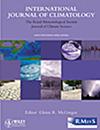摘要
了解这些变化的时间和分布现在至关重要。本研究利用CMIP6全球气候模式(GCMs)和高分辨率观测资料分析了1980 - 2100年降水和温度的变化。它研究了季节和年度变化、模式偏差以及各种气候情景的预测变化。研究结果表明,气候模式一贯高估降水,特别是在青藏高原东南部,而过去中西部地区普遍存在偏冷现象。季节降水模式在QTP中表现出显著的差异。偏差修正提高了模式的可靠性,加强了对整个QTP的湿润条件和持续变暖的预测。尽管一些地区的年累积量可能略有下降,但未来的预测表明冬季和夏季的情况会更加湿润。气温趋势显示,所有季节都明显变暖,预计冬季的增幅最大。最高和最低气温都显示出明显的上升趋势,特别是在高海拔地区。这些发现表明,青藏高原气候向更温暖、更湿润的方向转变,并具有潜在的环境和社会经济影响。该研究强调了在这种高海拔环境中采取适应策略以减轻气候风险和增强复原力的紧迫性。




Rapid climate change on the Qinghai-Tibetan Plateau (QTP) is reshaping ecosystems, altering water availability and affecting human livelihoods. Understanding the timing and distribution of these changes is now critical. This study examines precipitation and temperature changes from 1980 to 2100 using CMIP6 global climate models (GCMs) and high-resolution observational data. It examined seasonal and annual variability, model biases and projected changes for various climate scenarios. Our findings show that climate models consistently overestimated precipitation, particularly in southeastern QTP, while cold biases are prevalent in central and western regions in the past. Seasonal precipitation patterns exhibit significant variation across QTP. Bias corrections enhanced model reliability, reinforcing projections of wetter conditions and continued warming across QTP. Future projections indicate wetter conditions in winter and summer, though some areas may experience a slight decline in annual accumulations. Temperature trends project pronounced warming across all seasons, with the strongest increases expected in winter. Both maximum and minimum temperatures project significant upward trends, particularly at higher elevations. These findings indicate a shift toward a warmer and wetter climate at QTP, with potential environmental and socio-economic impacts. The study underscores the urgency of adaptive strategies to mitigate climate risks and enhance resilience in this high-altitude environment.

 求助内容:
求助内容: 应助结果提醒方式:
应助结果提醒方式:


